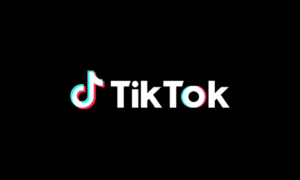LinkedIn has rapidly become an essential tool for HR professionals in the ever-evolving world of recruitment. Traditional resumes are no longer sufficient in finding top talent, and LinkedIn has filled this void as a revolutionary platform. This article explores why LinkedIn surpasses being merely a digital resume repository, it empowers HR teams through its potent features and networking opportunities. Discover why LinkedIn stands at the forefront of modern recruitment strategies.
Introduction: The Vital Role of LinkedIn in HR and Recruitment
In today’s fiercely competitive job market, Human Resources (HR) professionals continually seek innovative methods to source top talent. The ascent of social media and professional networking sites has elevated LinkedIn as a powerful tool in HR’s recruitment arsenal. LinkedIn, transcending the role of a mere job posting platform, has evolved into a window into organizational culture and values, while also serving as an essential hub for networking.
The Crucial Role of LinkedIn for HR Professionals:
1. Access to an Expansive Talent Pool:
LinkedIn boasts over 740 million users globally, making it the largest professional networking platform in the world. This vast and diverse talent reservoir empowers HR professionals to transcend local boundaries and access a richly varied pool of potential candidates, simplifying the process of finding the ideal fit for their organization.
2. Showcasing Company Culture:
LinkedIn serves not only as a space for job seekers but also as a portal into an organization’s ethos, fostering transparency regarding mission, vision, and workplace ambiance. Company pages on LinkedIn facilitate the communication of an organization’s culture, values, and work environment. Prospective candidates gain an invaluable glimpse into the organizational ethos, aiding them in evaluating their alignment with the company.
The Evolution of LinkedIn into a Professional Networking Powerhouse
Born in 2002, was the brainchild of Reid Hoffman, an American entrepreneur and former executive at PayPal.
Initially conceived as an online resume platform, LinkedIn offered users the opportunity to construct profiles showcasing their professional journey, including education, skills, recommendations from connections, and more. This facilitated employers in discovering potential candidates with ease.
In its infancy, LinkedIn faced competition from traditional online job search giants such as Monster.com and CareerBuilder.com. However, LinkedIn deviated from the conventional approach of job postings and applications, instead focusing on establishing personalized, interactive professional relationships.
Over the years, LinkedIn has witnessed a transformative evolution from a digital resume repository to a multifaceted professional networking powerhouse. In 2006, it introduced innovative features such as groups, fostering communities based on industry or interests. This created spaces for professionals to share insights, fostering networking opportunities.
LinkedIn achieved a significant milestone in 2011 with its initial public offering (IPO), raising $352 million. Subsequent developments included advanced search filters, job posting enhancements, and premium membership options tailored for
The Benefits of LinkedIn for Sourcing Professionals
LinkedIn has emerged as an indispensable tool for Human Resources (HR) professionals when it comes to sourcing top talent.
This section explores the various benefits of utilizing LinkedIn for sourcing professionals and underscores why it has become the go-to resource in the recruitment process.
1. Access to a Large and Diverse Talent Pool:
LinkedIn grants HR professionals access to an expansive and diverse pool of potential candidates. Unlike conventional approaches like job postings or career fairs, LinkedIn empowers recruiters to conduct searches based on precise criteria, encompassing skills, experience, location, education, and more. This precision streamlines the process of identifying well-matched candidates, sparing time and effort.
Moreover, LinkedIn’s diverse user base spans various industries, backgrounds, and expertise areas. This inclusiveness enhances the chances of locating qualified candidates who might not actively seek new opportunities but remain open to exploration if the right prospect is presented.
2. Detailed Profiles with Professional Information:
LinkedIn profiles serve as comprehensive digital representations of individuals’ professional journeys. In contrast to traditional resumes constrained by format and space limitations, LinkedIn profiles offer a comprehensive overview of a candidate’s work experience, skills, education, endorsements from colleagues, recommendations from previous employers, and showcased projects.
Opportunity for Passive Recruiting:
LinkedIn has become a game-changing platform for HR professionals, not only in active job postings and traditional recruitment methods but also in passive recruiting.
LinkedIn excels in passive recruiting by enabling recruiters to search for candidates based on specific criteria. With advanced search filters, you can narrow down your search to find professionals with the right qualifications, industry experience, location, and more. This targeted approach streamlines the process and connects you with potential candidates who meet your requirements.
LinkedIn’s “Connections” feature also allows you to leverage your existing network to identify potential candidates. Networking has always played a pivotal role in recruitment processes, and LinkedIn’s platform facilitates this by enabling you to tap into your connections and referrals to source potential talent.
In summary, passive recruiting through LinkedIn is a strategic approach that complements active job postings. It allows HR professionals to identify and engage with top
talent who may not be actively looking for new opportunities but possess the qualifications and experience required by their organizations.
Access to Recommendations and Endorsements:
LinkedIn has revolutionized the hiring process by providing a platform that goes beyond traditional resumes and job applications.
One of the key features that sets LinkedIn apart from other job search websites is its ability to showcase recommendations and endorsements from previous employers or colleagues.
When browsing through a candidate’s profile on LinkedIn, HR professionals have access to a section specifically dedicated to recommendations. This section allows candidates to request written testimonials from previous supervisors, colleagues or clients who can vouch for their skills and work ethic. These personalized recommendations provide valuable insights into a candidate’s strengths, areas of expertise and overall performance in previous roles.
Moreover, LinkedIn also allows users to endorse each other’s skills. These endorsements act as quick validations of a candidate’s abilities by showcasing which skills they are known for among their network. Endorsements add credibility to a candidate’s profile and help HR professionals get an idea of their strengths at a glance.
But why are these recommendations and endorsements so important? For starters, they offer an unbiased perspective on a candidate’s abilities, as they come directly from individuals who have worked with them before. They provide concrete evidence of what they bring to the table and how they have performed in past roles.
Conclusion:
LinkedIn has transcended its origins as a digital resume repository, emerging as an indispensable tool for HR professionals in the modern world of recruitment. The platform’s far-reaching impact is evident in its ability to empower HR teams to source top talent effectively and efficiently. With its vast user base, detailed profiles, advanced search capabilities, and networking opportunities, It offers a multifaceted approach to talent acquisition.
Read More:
How to Find Email Addresses on LinkedIn in 2023
LinkedIn Data APIs for Market Research and Competitive Analysis


































